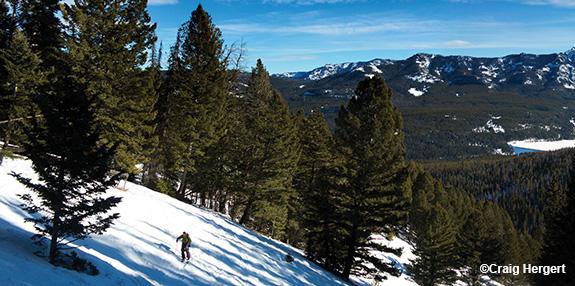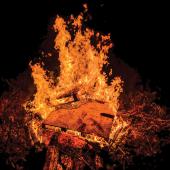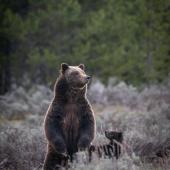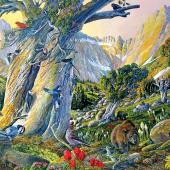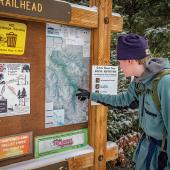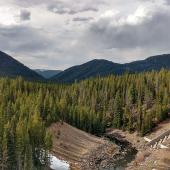Halfway Home
Forest plan revision turns two.
Two years into a four-year process, the Custer Gallatin National Forest finds itself right in the middle of making the new Forest Plan. Across the Forest, hundreds have attended meetings and been involved to date. Now, two years into the process, a document is out for review.
“It’s a complex process,” explains Forest Plan Revision team leader Virginia Kelly. “We’ve been reviewing and incorporating feedback throughout various phases these past two years and now we have one of the first opportunities where people can have a chance to review the document and submit comments during an official comment period.”
Comments submitted during this phase may help to identify areas where more information is needed, identify something that is missing, or help to steer potential directions for alternatives. The comment period also kicks off the start of the National Environmental Policy Act phase (NEPA), but a decision on Forest Planning will not be out until the close of 2019.
In terms of the document out for review, the proposed action is laid out in four chapters, in addition to the appendices and glossary, which offer more detail in a variety of areas and are referenced throughout the document. Those looking for a high-level glance of the Forest and its characteristics, how the plan is laid out, and the purpose, will want to take a look at Chapter 1.
The meat of the plan, or proposed action at this point, will be in Chapter 2 as part of Forest-wide direction covering ecosystems, air quality, soils, watershed, vegetation, carbon storage, wildlife, and benefits that people obtain from public lands. These include social and economic sustainability, tribal importance, and cultural and historic resources. This section also contains information on a variety of uses such as grazing, timber, mining and energy, recreation, land ownership, interpretation, infrastructure, scenery, and designated areas. People may choose to look at this as a whole or hone into their particular resource of interest.
Chapter 3 breaks into the geographic areas and recognizes the individuality of places across the Forest. The Custer Gallatin is broken up into six geographic areas, with the Pryor Mountains being the smallest and the Absaroka-Beartooth Mountains the largest. This chapter is particularly useful in determining what is unique to individual areas in the plan. It shows how individual units are broken out in terms of recreation setting, designated areas (including eligible Wild and Scenic rivers), scenery, suitability of timber lands, vegetation classification, and any plan components particular to that region. The final chapter begins outlining how components of the plan will be monitored over the life of the plan.
This winter, while you’re cozying up in front of the fire, take some time to review this draft. That way, you can provide input and help shape the future of the Custer Gallatin National Forest.
Mariah Leuschen-Lonergan is a public affairs specialist with the Custer Gallatin National Forest.


